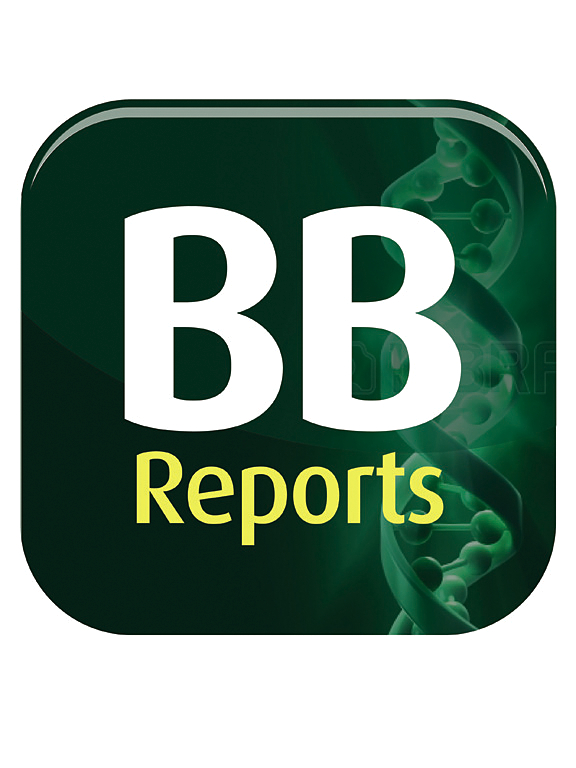在Aβ和tau驱动的阿尔茨海默病小鼠模型中,BDNF基因治疗通过独特和常见的转录反应来拯救神经元功能
IF 2.2
Q3 BIOCHEMISTRY & MOLECULAR BIOLOGY
引用次数: 0
摘要
脑源性神经营养因子(BDNF)保护神经元免受退化,使其成为阿尔茨海默病(AD)有希望的治疗靶点。然而,脑内BDNF过表达导致的遗传调控仍有待进一步阐明。利用APP/PS1和rTg4510小鼠模型,我们分析了海马内注射AAVT42-BDNF后的海马转录组。在Aβ积累的APP/PS1小鼠中,BDNF上调参与神经元信号传导的基因,下调神经退行性通路。在p-tau病理的rTg4510小鼠中,上调基因与细胞分化和神经元发育相关,而下调基因与代谢和生物合成相关。通过比较两菌株的差异表达基因(DEGs),鉴定出8个常见的上调基因(Cecr2、Cdhr1、Dusp6、Pam、Rasd1、Dusp4、Htr5b、Tmem117)和2个下调基因(Abhd14a、Pmel)。值得注意的是,Npy、Crh、tac1这三个基因在两种模型中均上调,表明有共同的神经保护机制。这些发现揭示了BDNF在a β和p-tau发病机制中的独特和共同的遗传反应,支持其作为AD治疗策略的潜力。本文章由计算机程序翻译,如有差异,请以英文原文为准。
BDNF gene therapy rescues neuronal function via unique and common transcriptional responses in Aβ and tau-driven Alzheimer's disease mouse models
Brain-derived neurotrophic factor (BDNF) protects neurons from degeneration, making it a promising therapeutic target for Alzheimer's disease (AD). However, the genetic regulation resulting from BDNF overexpression in the brain remains to be further illustrated. Using APP/PS1 and rTg4510 mouse models, we analyzed hippocampal transcriptomes after intrahippocampal AAVT42-BDNF injection. In APP/PS1 mice with Aβ accumulation, BDNF upregulated genes involved in neuronal signaling and downregulated neurodegenerative pathways. In rTg4510 mice with p-tau pathology, upregulated genes were associated with cell differentiation and neuronal development, while downregulated genes were related to metabolism and biosynthesis. A comparison of differentially expressed genes (DEGs) between the two strains identified eight commonly upregulated genes (Cecr2, Cdhr1, Dusp6, Pam, Rasd1, Dusp4, Htr5b, Tmem117) and two downregulated genes (Abhd14a, Pmel). Notably, three genes - Npy, Crh, Tac1-were upregulated in both models, suggesting shared neuroprotective mechanisms. These findings reveal distinct and common genetic responses to BDNF in Aβ and p-tau pathogenesis, supporting its potential as a therapeutic strategy for AD.
求助全文
通过发布文献求助,成功后即可免费获取论文全文。
去求助
来源期刊

Biochemistry and Biophysics Reports
Biochemistry, Genetics and Molecular Biology-Biophysics
CiteScore
4.60
自引率
0.00%
发文量
191
审稿时长
59 days
期刊介绍:
Open access, online only, peer-reviewed international journal in the Life Sciences, established in 2014 Biochemistry and Biophysics Reports (BB Reports) publishes original research in all aspects of Biochemistry, Biophysics and related areas like Molecular and Cell Biology. BB Reports welcomes solid though more preliminary, descriptive and small scale results if they have the potential to stimulate and/or contribute to future research, leading to new insights or hypothesis. Primary criteria for acceptance is that the work is original, scientifically and technically sound and provides valuable knowledge to life sciences research. We strongly believe all results deserve to be published and documented for the advancement of science. BB Reports specifically appreciates receiving reports on: Negative results, Replication studies, Reanalysis of previous datasets.
 求助内容:
求助内容: 应助结果提醒方式:
应助结果提醒方式:


